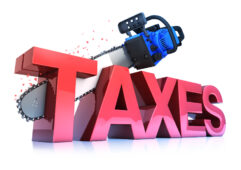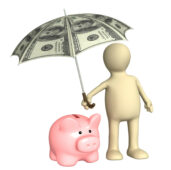Income from financial savings assist retirees complete their retirement income requirements. Typically, the well-to-do have selected municipal bonds for their tax-free income. But because of their tax-free status, municipal bonds typically pay a considerably reduced rate of interest than 'taxable' corporate bonds. However whether well-to-do or not, every retired persons need a tax shelter. Other income-based investments are generally taxed at normal income rates (as high as 35%). Nevertheless, a tax shelter on qualifying returns tends to make high-dividend shares a reasonable alternative for both average and wealthy retired persons.
Ordinary dividend income is included to your other gross income. After deductions and exemptions, your resulting 'taxable' income is taxed at the income tax rate for the filing status. These tax rates have tax brackets that run from 10% to 35% depending on how much taxable income you've.
However for 2012 you may be able to tax advantage of 1 of the great tax breaks. Tax rates on qualifying dividend income (in addition to net long-term capital gains) might be as low as 0%, based on whether or not your taxable income tax rate falls below the 25% bracket. The table displays the taxable income for your filing status that places you at the 25% income rate. Beneath that taxable income, your qualified returns are tax free; at or above it they're taxed at only 15% (These rates presently continue through 2012).
When do ordinary dividends become 'qualifying' dividends?
For a stock dividend to be subject to taxes as a certified dividend, you must hold the stock for more than sixty times during the 121-day period that begins sixty days before the ex-dividend date. This just prevents you from purchasing the stock 'ex-dividend' when its cost momentarily drops due to the loss dividend. In other words, as long as you're not a short-term trader, your stock returns will be qualifying dividends and thereby qualify for a tax shelter.
Discover high-paying stock dividends for your investment income
Preferred stocks and high-dividend paying stock can function as an excellent supply of retirement income. Remember that stock payouts aren't as secure as income from fixed income investments. If you do purchase shares for income, hold them long enough to make their dividends 'qualifying'. Then pay either no tax or only 15% through 2012.
|
Investment tax rates versus Income tax rate |
|
| Tax rate on net long term capital gains and qualified Dividends | If 'taxable' Income tax rate bracket is: |
| 0% | Less than 25% |
| 15% | At 25% or higher |
|
Filing Status determines where 25% income tax begins |
|
| For filing status | 25% Income tax rate begins at |
| Single: | $35,350 |
| Married Filing Jointly: | $70,700 |
You Pay More Taxes Than Necessary
And we guarantee your CPA has never told you The problem with paying taxes is that most people overpay. So if you are concerned about having enough in retirement, you must stop overpaying taxes. I know you think your CPA takes care of this for you. WRONG. I AM a CPA (retired) and I can tell you that 90% of CPAs do nothing more than enter your information into the little boxes on the tax return but NEVER tell you how to pay less next year. Why? Many of them simply do not know what we can show you. In ten minutes.Get Your Copy Now - 6 Ways to Cut Retirement Taxes






Leave a Reply